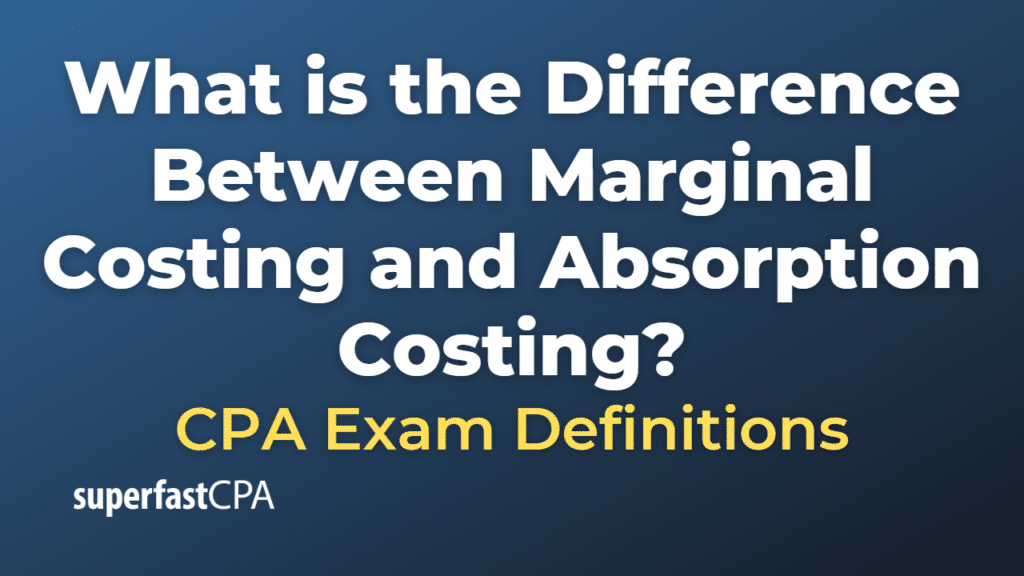Difference Between Marginal Costing and Absorption Costing
Marginal costing and absorption costing are two different methods of applying costs to manufactured products. They differ in how they handle fixed manufacturing overhead costs:
- Marginal Costing (also known as Variable Costing or Direct Costing): Under this method, only variable manufacturing costs—those costs that change in proportion to production output, such as direct materials, direct labor, and variable manufacturing overhead—are included in the cost of a product. Fixed manufacturing overhead costs (costs that do not change with the level of production, such as rent or salary of a factory manager) are treated as period costs and are expensed in the period incurred, regardless of the level of production. Marginal costing is particularly useful for short-term decision making and profit planning.
- Absorption Costing (also known as Full Costing): This method treats all manufacturing costs, both variable and fixed, as product costs. This means that fixed manufacturing overhead costs are allocated or ‘absorbed’ into the cost of the product, along with direct materials, direct labor, and variable manufacturing overhead. Absorption costing is generally required for external financial reporting and for income tax reporting. It gives a more comprehensive picture of the true cost of producing each unit of product, including the overhead costs of the production facility.
The key difference between these methods lies in the treatment of fixed manufacturing overhead costs. Under marginal costing, these costs are treated as period costs and expensed in the period they occur. Under absorption costing, these costs are allocated to the product and recognized as expense when the product is sold. The choice of costing method can affect reported profit levels, inventory valuation, and management decision making.
Example of the Difference Between Marginal Costing and Absorption Costing
Let’s consider a hypothetical company called “Widget Co.” that manufactures a single product. Here are some details:
- Direct materials per unit: $10
- Direct labor per unit: $15
- Variable manufacturing overhead per unit: $5
- Fixed manufacturing overhead: $20,000 per month
- Units produced: 10,000 units per month
- Units sold: 9,000 units per month
Let’s calculate the cost per unit and total cost under both methods:
Marginal Costing:
Under marginal costing, only the variable costs are included in the product cost.
- Total variable cost per unit: Direct materials + Direct labor + Variable overhead = $10 + $15 + $5 = $30
- Total cost of units sold: Cost per unit * Units sold = $30 * 9,000 = $270,000
- Fixed overhead is treated as a period expense: $20,000
Absorption Costing:
Under absorption costing, both variable and fixed costs are included in the product cost.
- Fixed cost per unit: Total fixed overhead / Units produced = $20,000 / 10,000 = $2
- Total cost per unit: Direct materials + Direct labor + Variable overhead + Fixed cost per unit = $10 + $15 + $5 + $2 = $32
- Total cost of units sold: Cost per unit * Units sold = $32 * 9,000 = $288,000
So, under marginal costing, the cost of units sold is $270,000 and the fixed manufacturing overhead is treated as a separate expense of $20,000. Under absorption costing, the cost of units sold already includes the fixed manufacturing overhead, resulting in a total cost of $288,000. This example shows how the choice of costing method can affect the cost of goods sold and thus the reported profit.













